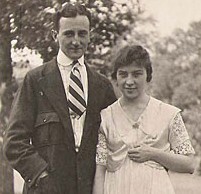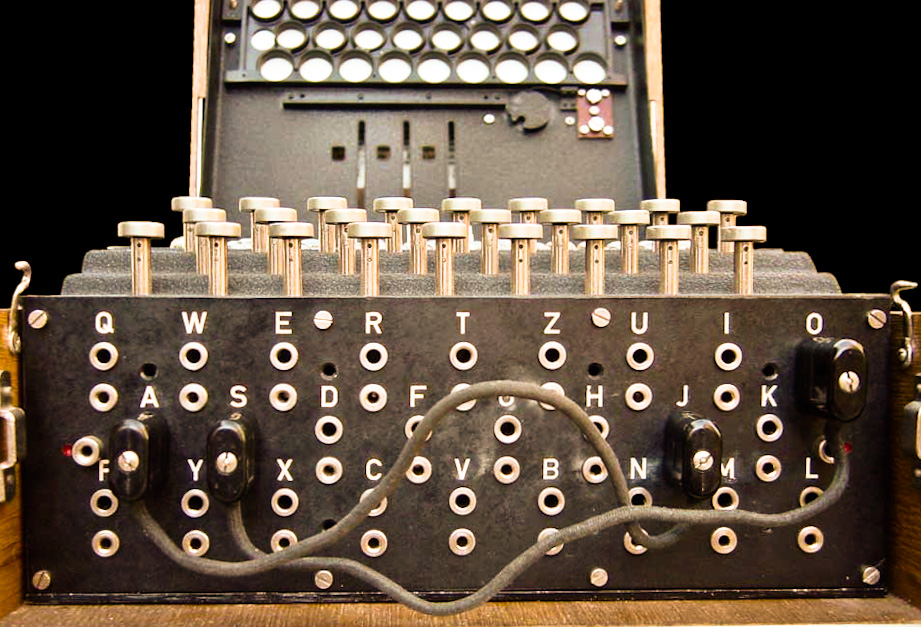|
Sigaba
In the history of cryptography, the ECM Mark II was a cipher machine used by the United States for message encryption from World War II until the 1950s. The machine was also known as the SIGABA or Converter M-134 by the Army, or CSP-888/889 by the Navy, and a modified Navy version was termed the CSP-2900. Like many machines of the era it used an electromechanical system of rotors to encipher messages, but with a number of security improvements over previous designs. No successful cryptanalysis of the machine during its service lifetime is publicly known. History It was clear to US cryptographers well before World War II that the single-stepping mechanical motion of rotor machines (e.g. the Hebern machine) could be exploited by attackers. In the case of the famous Enigma machine, these attacks were supposed to be upset by moving the rotors to random locations at the start of each new message. This, however, proved not to be secure enough, and German Enigma messages were freque ... [...More Info...] [...Related Items...] OR: [Wikipedia] [Google] [Baidu] |
William Friedman
William Frederick Friedman (September 24, 1891 – November 12, 1969) was a US Army cryptographer who ran the research division of the Army's Signal Intelligence Service (SIS) in the 1930s, and parts of its follow-on services into the 1950s. In 1940, subordinates of his led by Frank Rowlett broke Japan's PURPLE cipher, thus disclosing Japanese diplomatic secrets before America's entrance into World War II. Early life Friedman was born Wolf Friedman ( yi, װאָלףֿ פֿרידמאַן, russian: Вольф Ф. Фридман), in Chişinău, Bessarabia, the son of Frederick Friedman, a Jew from Bucharest who worked as a translator and linguist for the Russian Postal Service, and the daughter of a well-to-do wine merchant. Friedman's family fled Russia in 1892 to escape the virulent anti-Semitism there, ending up in Pittsburgh, Pennsylvania. Three years later, his first name was changed to William. As a child, Friedman was introduced to cryptography in the short story "Th ... [...More Info...] [...Related Items...] OR: [Wikipedia] [Google] [Baidu] |
History Of Cryptography
Cryptography, the use of codes and ciphers to protect secrets, began thousands of years ago. Until recent decades, it has been the story of what might be called classical cryptography — that is, of methods of encryption that use pen and paper, or perhaps simple mechanical aids. In the early 20th century, the invention of complex mechanical and electromechanical machines, such as the Enigma rotor machine, provided more sophisticated and efficient means of encryption; and the subsequent introduction of electronics and computing has allowed elaborate schemes of still greater complexity, most of which are entirely unsuited to pen and paper. The development of cryptography has been paralleled by the development of cryptanalysis — the "breaking" of codes and ciphers. The discovery and application, early on, of frequency analysis to the reading of encrypted communications has, on occasion, altered the course of history. Thus the Zimmermann Telegram triggered the United States ... [...More Info...] [...Related Items...] OR: [Wikipedia] [Google] [Baidu] |
Rotor Machine
In cryptography, a rotor machine is an electro-mechanical stream cipher device used for encrypting and decrypting messages. Rotor machines were the cryptographic state-of-the-art for much of the 20th century; they were in widespread use in the 1920s–1970s. The most famous example is the German Enigma machine, the output of which was deciphered by the Allies during World War II, producing intelligence code-named ''Ultra''. Description The primary component of a rotor machine is a set of ''rotors'', also termed ''wheels'' or ''drums'', which are rotating disks with an array of electrical contacts on either side. The wiring between the contacts implements a fixed substitution of letters, replacing them in some complex fashion. On its own, this would offer little security; however, before or after encrypting each letter, the rotors advance positions, changing the substitution. By this means, a rotor machine produces a complex polyalphabetic substitution cipher, which change ... [...More Info...] [...Related Items...] OR: [Wikipedia] [Google] [Baidu] |
Frank Rowlett
Frank Byron Rowlett (May 2, 1908 – June 29, 1998) was an American cryptologist. Life and career Rowlett was born in Rose Hill, Lee County, Virginia and attended Emory & Henry College in Emory, Virginia. In 1929 he received a bachelor's degree in mathematics and chemistry. He was hired by William Friedman as a "junior cryptanalyst" for the Signals Intelligence Service (SIS) on April Fools' Day 1930; shortly after, he was followed into SIS by Abraham Sinkov and Solomon Kullback. During the 1930s, after a lengthy period of training, Rowlett and his colleagues compiled codes and ciphers for use by the U.S. Army and began solving a number of foreign, notably Japanese, systems. In the mid-1930s, they solved the first Japanese machine for encipherment of diplomatic communications, known to the Americans as RED. In 1939–40, Rowlett led the SIS effort that solved a more sophisticated Japanese diplomatic machine cipher, codenamed PURPLE by the U.S. Once, when asked what his ... [...More Info...] [...Related Items...] OR: [Wikipedia] [Google] [Baidu] |
M-134 Cipher Machine , or Converter M-134, a historic cipher machine
{{Letter-NumberCombDisambig ...
The M134 Minigun is a six-barrel rotary machine gun. M134 or M-134 may also refer to: * M134 bomblet, a 1950s American chemical sub-munition * M-134 (Michigan highway), a state highway in Michigan * SIGABA In the history of cryptography, the ECM Mark II was a cipher machine used by the United States for message encryption from World War II until the 1950s. The machine was also known as the SIGABA or Converter M-134 by the Army, or CSP-888/889 by the ... [...More Info...] [...Related Items...] OR: [Wikipedia] [Google] [Baidu] |
OP-20-G
OP-20-G or "Office of Chief Of Naval Operations (OPNAV), 20th Division of the Office of Naval Communications, G Section / Communications Security", was the U.S. Navy's signals intelligence and cryptanalysis group during World War II. Its mission was to intercept, decrypt, and analyze naval communications from Japanese, German, and Italian navies. In addition OP-20-G also copied diplomatic messages of many foreign governments. The majority of the section's effort was directed towards Japan and included breaking the early Japanese "Blue" book fleet code. This was made possible by intercept and High Frequency Direction Finder (HFDF) sites in the Pacific, Atlantic, and continental U.S., as well as a Japanese telegraphic code school for radio operators in Washington, D.C. History The Code and Signal Section was formally made a part of the Division of Naval Communications (DNC), as Op-20-G, on July 1, 1922. In January 1924, a 34-year-old U.S. Navy lieutenant named Laurance F. ... [...More Info...] [...Related Items...] OR: [Wikipedia] [Google] [Baidu] |
Cryptanalysis Of The Enigma
Cryptanalysis of the Enigma ciphering system enabled the western Allies in World War II to read substantial amounts of Morse-coded radio communications of the Axis powers that had been enciphered using Enigma machines. This yielded military intelligence which, along with that from other decrypted Axis radio and teleprinter transmissions, was given the codename '' Ultra''. The Enigma machines were a family of portable cipher machines with rotor machine, rotor scramblers. Good operating procedures, properly enforced, would have made the plugboard Enigma machine unbreakable. However, most of the German military forces, secret services, and civilian agencies that used Enigma employed poor operating procedures, and it was these poor procedures that allowed the Enigma machines to be reverse engineered, reverse-engineered and the ciphers to be read. The German plugboard-equipped Enigma became Nazi Germany's principal cryptography, crypto-system. In December 1932 it was "broken" ... [...More Info...] [...Related Items...] OR: [Wikipedia] [Google] [Baidu] |
Laurance Safford
Captain, U.S.N. Laurance Frye Safford (October 22, 1893 – May 15, 1973) was a U.S. Navy cryptologist. He established the Naval cryptologic organization after World War I, and headed the effort more or less constantly until shortly after the Japanese attack on Pearl Harbor. His identification with the Naval effort was so close that he was the Friedman of the Navy. Biography Safford was born in 1893 in Somerville, Massachusetts. He secured an appointment to Annapolis, and graduated fifteenth in the class of 1916. In January 1924 he was called from command of a minesweeper off the China coast to head the "research desk" of the Code and Signal Section within the Office of Naval Communications. In the beginning his sole task was to exploit a Japanese naval codebook that had been filched from the Japanese consulate in New York City. To do this he had four civilian clerical employees. Safford promoted the effort throughout the Navy, attracting Agnes Meyer Driscoll, Joseph Roche ... [...More Info...] [...Related Items...] OR: [Wikipedia] [Google] [Baidu] |
Office Of Naval Intelligence
The Office of Naval Intelligence (ONI) is the military intelligence agency of the United States Navy. Established in 1882 primarily to advance the Navy's modernization efforts, it is the oldest member of the U.S. Intelligence Community and serves as the nation's premier source of maritime intelligence. Since the First World War, ONI's mission has broadened to include real-time reporting on the developments and activities of foreign navies; protecting maritime resources and interests; monitoring and countering transnational maritime threats; providing technical, operational, and tactical support to the U.S. Navy and its partners; and surveying the global maritime environment. ONI employs over 3,000 military and civilian personnel worldwide and is headquartered at the National Maritime Intelligence Center in Suitland, Maryland. History Despite playing an active and decisive role in the American Civil War, in the following years the U.S. Navy fell into precipitous decline. A lac ... [...More Info...] [...Related Items...] OR: [Wikipedia] [Google] [Baidu] |
_4.jpg)




